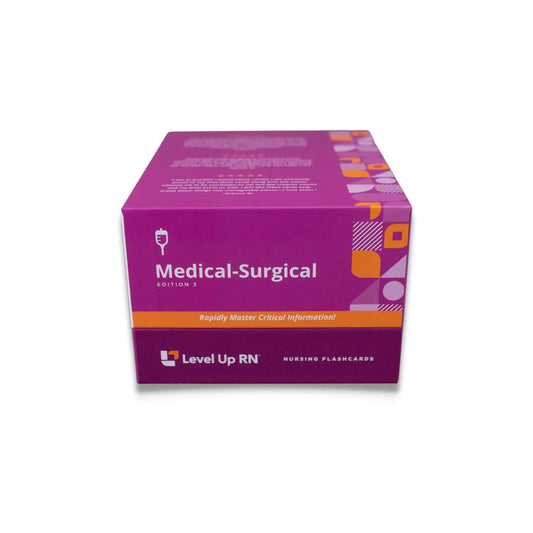Med-Surg - Integumentary System, part 11: SJS and TEN
Updated: Cathy ParkesStevens-Johnson Syndrome (SJS) and Toxic Epidermal Necrolysis (TEN), including pathophysiology, signs/symptoms, diagnosis, treatment, and nursing care for these life-threatening skin reactions.
Full Transcript: Med-Surg - Integumentary System, part 11: SJS and TEN
Full Transcript: Med-Surg - Integumentary System, part 11: SJS and TEN
Hi, I'm Cathy with Level Up RN. In this video, I will be discussing Stevens-Johnson syndrome, as well as toxic epidermal necrolysis. And at the end of the video, I'll be giving you guys a little quiz to test your knowledge of some of the key points I'll be covering, so definitely stay tuned for that. And if you have our Level Up RN medical surgical nursing flashcards, definitely pull those out so you can follow along with me. I'm on the last card in this deck, and this is the last video in this playlist.
Stevens-Johnson syndrome, or SJS, and toxic epidermal necrolysis, or TEN, are life-threatening skin reactions that are triggered by certain medications such as anticonvulsants, allopurinol, which is a gout medication, and sulfonamides, which is a class of antibiotics. So the key difference between these two disorders is really severity. TENs results in more skin loss than SJS. These skin reactions are typically due to a genetic mutation that causes the immune system to react abnormally to these medications and causes the destruction of cells in the skin and in the mucous membranes. So symptoms of these conditions include flu-like symptoms followed by painful, blistering, and peeling of the skin. This typically begins on the face and chest and then may move to other portions of the body. Diagnosis is done through a skin biopsy and treatment includes the discontinuation of the causative medication, as well as fluid resuscitation, oxygen therapy, analgesics, and corticosteroids. The patient may need to be intubated and receive mechanical ventilation, and if possible, the patient should be admitted to a burn unit. In addition to those interventions, as the nurse, you want to make sure you are maintaining the patient's body temperature, and you should provide wound care as ordered using nonadherent dressings.
All right, it's quiz time, and I've got three questions for you. First question. Stevens-Johnson syndrome and toxic epidermal necrolysis are caused by a bacterial skin infection. True or false? The answer is false. These skin reactions are caused by an abnormal immune response triggered by certain medications. Question number two, how is SJS and TEN diagnosed? The answer is through a skin biopsy. Question number three, patients with significant skin loss due to SJS or TEN should be admitted to a burn unit when possible. True or false? The answer is true. Okay, I hope you did great on that quiz, and I hope you found this video to be helpful. Take care, and good luck with studying.



1 comment
This is exactly what am looking for.
The content of your review is a full package.
Thank you Nurse Cathy Parkes.
Stephanie Dike